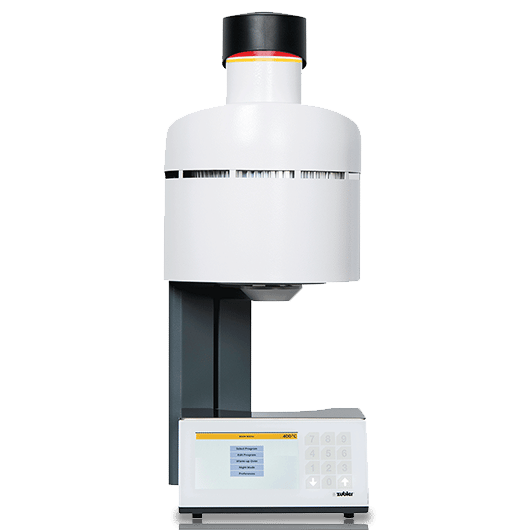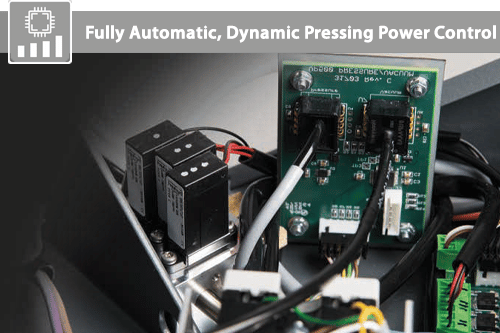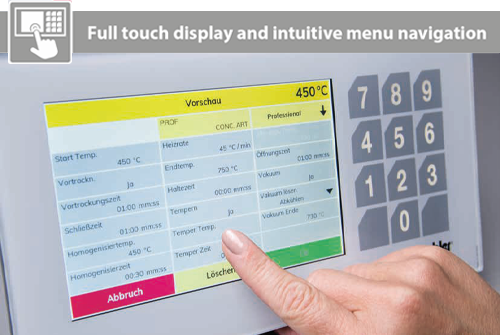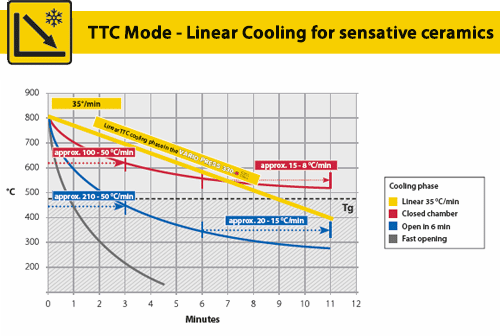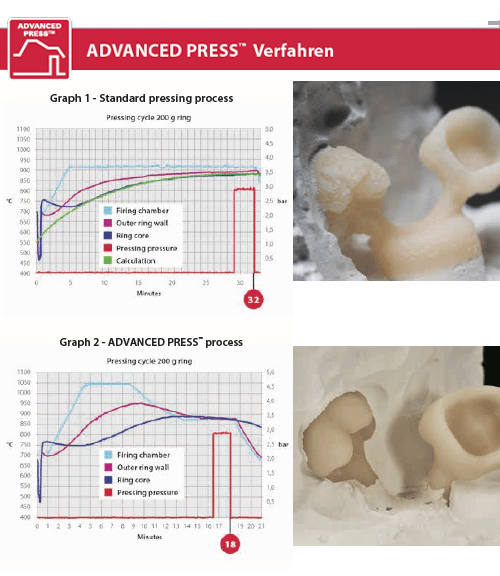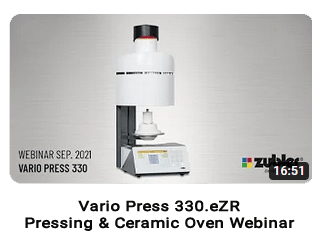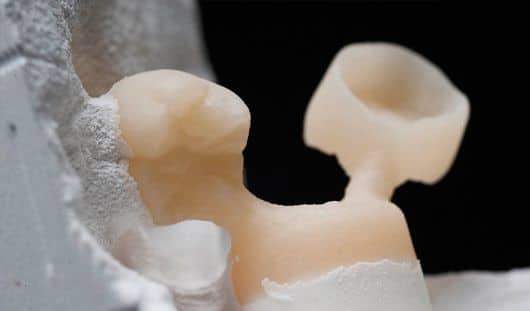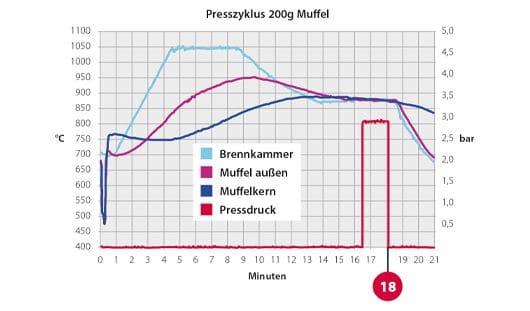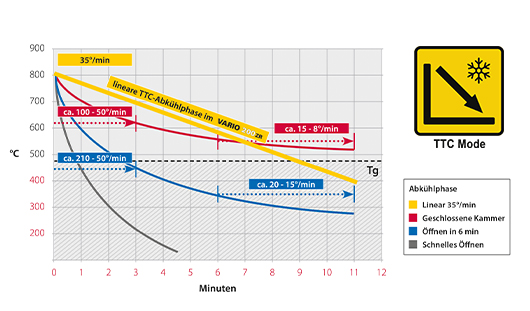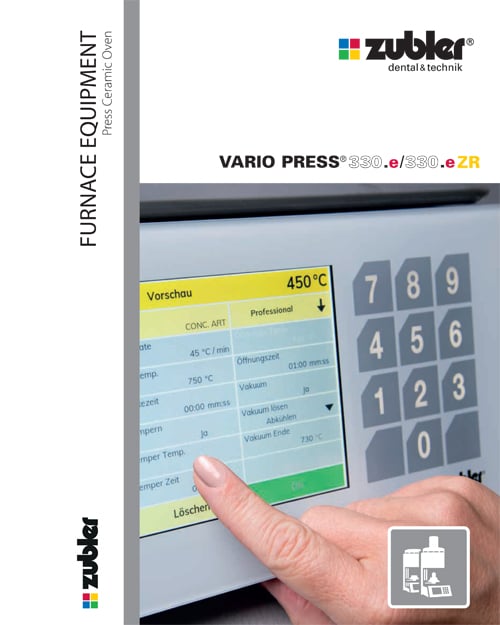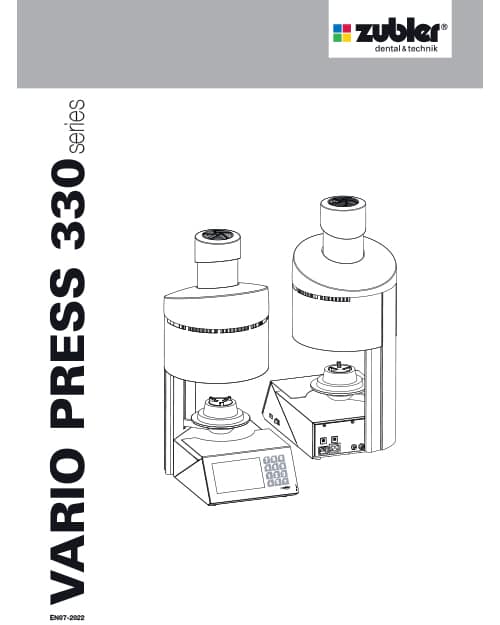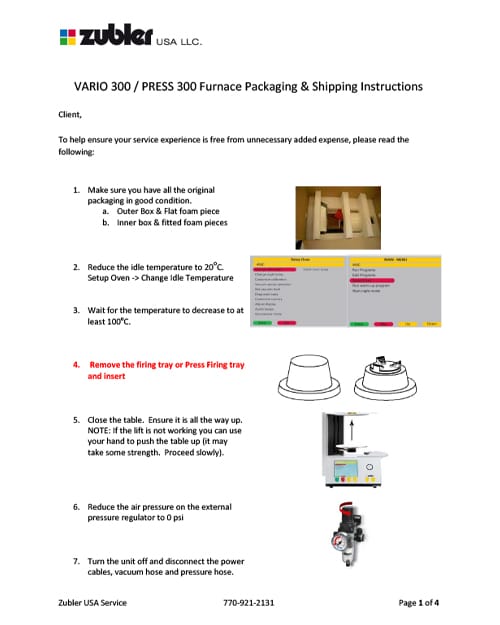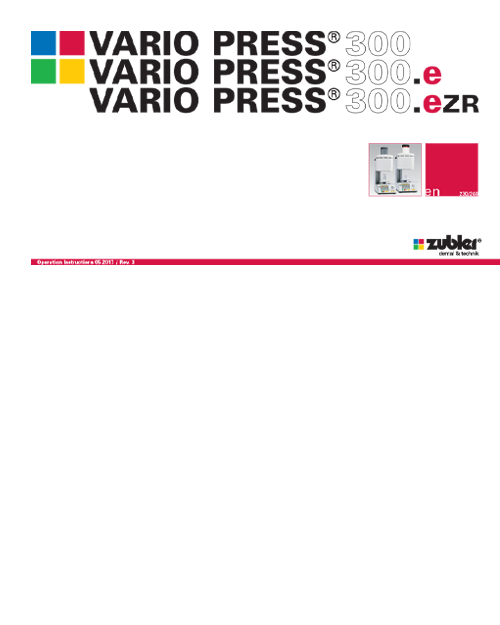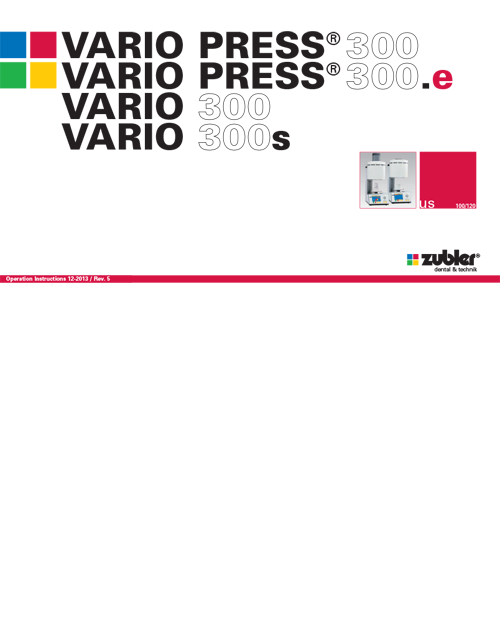Vario Press Ovens
Vario Press 330.e / 330.eZR Combi-Press/Ceramic Ovens
Zubler’s Vario Press series is known for its advanced technology, including the Advanced Press and TTC Linear cooling features in the Vario Press 300.eZR. These ovens are highly regarded for their quality and durability, making them the top choice for combined pressing and ceramic capabilities.
Key features include a new agile touchscreen interface for quicker navigation and adjustments. The Automatic Dynamic Pressing Power Control automatically adjusts the force of the press, while the advanced press feature allows rapid pressing of lithium disilicates with reduced reaction layer formation. Additionally, 100g rings can be pressed for 12-14 minutes.
The Vario Press 330.e/330.eZR, with its symmetrical lift design, monitors chamber temperature and lift position to maintain the optimal pre-dry temperature. The Z-Dry Mode allows controlled drying to prevent cracks and blisters, enabling quicker subsequent firings. With Z-Dry Mode, work can be placed on the firing tray before the programmed start temperature.
Technical Data:
| Dimensions: (H x W x D) | 765mm x 360mm x 425mm |
| Weight: | 27 kg |
| Voltage: | 115Vac 50/60Hz |
| Power: | 1300 W |
Scope of Delivery (Quantity)
| VP330.e/VP330.eZR Press ceramic oven | x 1 |
| Power cable | x 1 |
| Flex Ring System 100g + 200g | x 1 |
| Press tray | x 1 |
| Firing tray | x 1 |
| Vacuum hose including filter | x 1 |
| Compressed Air Hose 2m | x 1 |
| Sample of 13mm Disposable Plungers | x 1 |
| Ring Tongs | x 1 |
| Spare fuse | x 1 |
| USB flash drive | x 1 |
| Tweezers, long | x 1 |
| User’s manual | x 1 |


